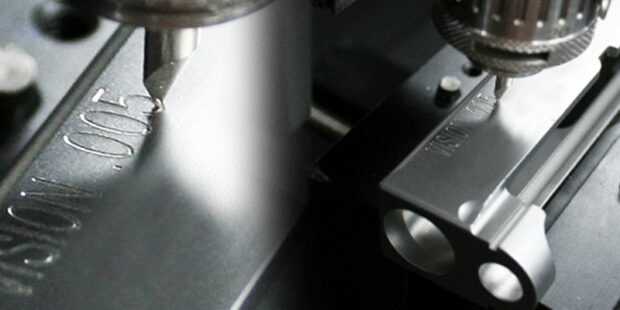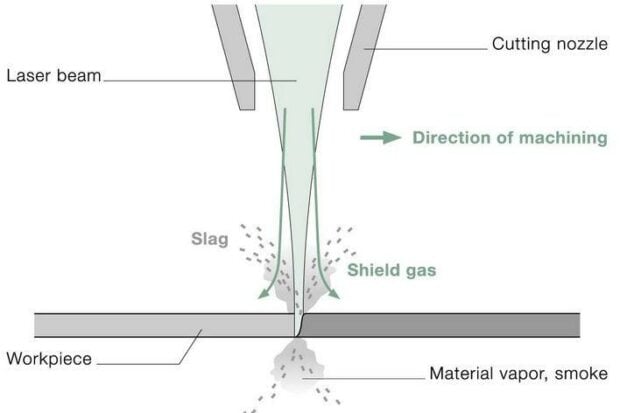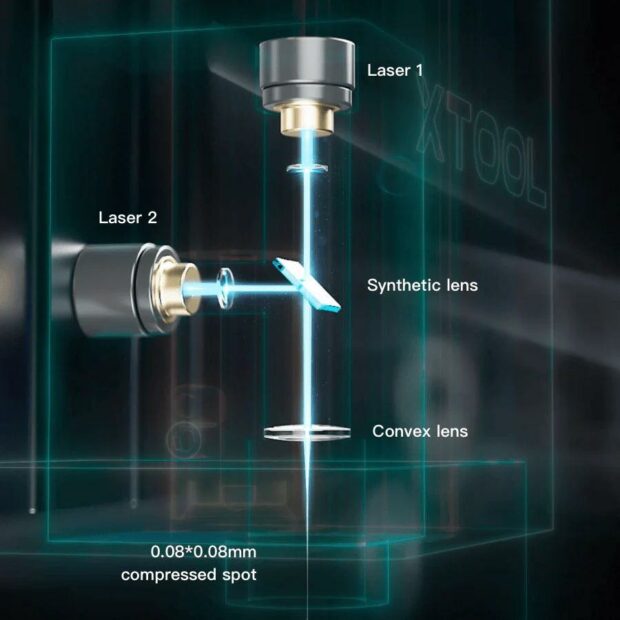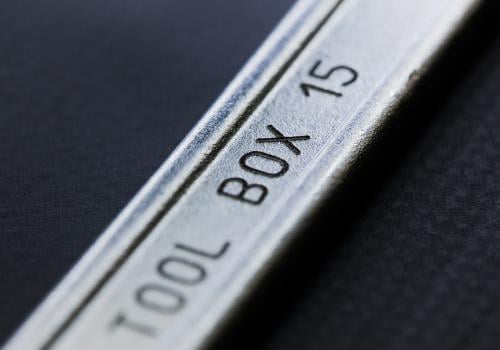Metal engraving is an art form that involves making incisions on metal surfaces. Marks may be in the form of lines, letters, logos, and other designs.
You can use different engravers and methods depending on the material you’re engraving on.
Unlike paper, leather, and fabric, metal is a hard material that is difficult to mark on. Inscribing on metal entails engraving it.
Metal engraving requires the removal of matter from the surface of the metal. This needs heat or a harder object to accomplish.
Hand engraving may be difficult when you’re dealing with hundreds of items to engrave. As such, this article will cover what you need to know about metal engraving machines and techniques.
What Is Metal Engraving?

The process of metal engraving involves removing particles from the material’s surface. It requires either a cutting tool or a laser.
Laser is capable of emitting high temperature that is higher than the melting point of the metal. Because of this, laser engraving is faster and more ideal than using a cutting tool.
How Does a Metal Engraving Tool Work?

Source: Trumpf
LASER stands for Light Amplification by the Stimulated Emission of Radiation. A continuous wave of laser provides sufficient energy to oxidize the surface of the metal. The metal absorbs the beams while the temperature of the surface increases.
Heat combines with oxygen to make an oxide layer. This layer typically has a different color, which creates a permanent mark on the metal surface.
Laser engraving works on the principles of sublimation. This involves the transformation of solid directly to gas. Only a laser can emit a temperature higher than the melting point of the metal for it to skip to gas.
How to Engrave Metal: The 5-Step Process
Regardless of the engraving services you wish to avail of, most of them undergo these steps.
Step 1. Know Which Materials to Work With
You can engrave many kinds of metals. Some of which are steel of various grades, stainless steel, alloyed steel, aluminum, titanium, brass, copper, gold, silver, hardened metals, coated metals, etc.
Given these choices, you first should decide on the ideal metal you want to work on.
Step 2. Choose the Applications You Want to Use Your Engraving Machine For
From your chosen metal, you have to decide what you want to do with it. Common applications include bar codes, serial numbers, 2D matrix codes, medical markings, product branding, graphics, and personalization.
Step 3. Determine If You Need to Perform Radial Laser Engraving
A flat surface is ideal for engraving because the laser beam can move across it evenly. You need to perform radial laser engraving if you want to engrave curved, cylindrical, or spherical metal parts.
Step 4. Programming and Calibrating Your System
Before you can start engraving, you have to program your design into your laser engraver’s computer software. This includes even the simplest designs like texts and numbers.
Step 5. Begin Engraving Metal
Everything is now in place, and you’re good to go. All you have to do is send the command from your software for your engraver to begin. Make sure that you’ve taken note of the safety protocols for dealing with laser devices.
The Types of Laser Engraving Machines That Can Engrave Metal
When you search for engravers for metals, you’ll see many types you can purchase. Here’s how they are differentiated.
1. Fiber Laser Engravers
Fiber laser engravers are extremely powerful with immense energy output.
They can work at high speeds, which makes them suitable for industrial purposes. These engravers are considerably big and take up more space than other engravers.
2. Diode Laser Engravers

A diode laser machine is more compact, affordable, and beginner-friendly than a fiber laser machine.
It can also be used for laser etching metal. More powerful diode engravers can achieve different colors at different power levels.
3. CO2 Laser Engravers
The best machines for laser etching metal are CO2 laser engravers. They can also create marks on different materials, such as wood, acrylic, leather, glass, and ceramics.
Their laser beams are better for etching than engraving.
4. Infrared Laser Engravers
Infrared laser engravers can work for both plastic and metals. Their wavelength is ideal for engraving plastic and etching metal.
The Different Metal Laser Engraving Techniques

Aside from the different lasers that you can use for metal engraving, you can use different methods for it as well. They are the following.
Laser Engraving Metal
Laser engraving requires the capability of laser beams to vaporize the parts of the metal to form the desired pattern.
The process involved here is sublimation, which converts metals into gases to modify the material’s surface.
Since metals are hard, their melting point is over 1,800 degrees. Their boiling point is even higher at 7,000 degrees. Only a powerful laser machine specifically made for engraving can laser engrave metals.
Laser engraving on metals is a fast and long-lasting method. It creates deeper incisions than laser etching and marking.
Laser Etching Metal
Laser etching metal differs from laser engraving in terms of its process and results. It doesn’t involve vaporizing or removing metals to make a pattern.
The process involved in laser etching metal is oxidation, which changes the original color of metals.
Only the upper micro surface is melted during etching, which causes oxidation. The laser beam melts this upper layer and causes the metal to stretch and expand.
This results in a raised mark that is different from the incision made in the engraving process.
Since laser etching metal only involves the upper micro surface of metals, smaller desktop laser engravers can do the job. Hobbyists and small businesses can easily do laser etching at home.
However, laser etching doesn’t produce results as long-lasting as those of laser engraving. Laser etching results can fade, while laser engraving results can last a lifetime.
Laser Marking Metal
Laser marking is another permanent process that creates lasting patterns on metals and hard plastics.
It involves using a concentrated laser beam to interact with the material’s surface. This changes not only the appearance but also the properties of the area.
Laser marking often results in precise marks, which can work for hard materials like metals and hard plastics.
Difference Between Laser Engraving and Laser Marking
Firstly, laser engraving and laser marking differ in terms of their depth of penetration.
Engraving is a method that penetrates the surface of the material. Marking is a technique that involves little to no penetration.
Another difference that laser engraving and laser marking have is how they change the structure of the metal surface.
Engraving removes material from it. Marking uses a concentrated laser beam to change the surface.
Laser engraving and laser marking tools are also different. Engraving often involves lasers or cutting tools, while marking involves lasers and marking agents.
What Materials and Metals Can I Engrave?
There is a wide variety of materials you can choose from for engraving. These are the more common ones.
- Stainless Steel – This is one of the preferred options nowadays because of its corrosion resistance, moisture resistance, and durability. Because of its properties, it is used in many everyday items like bottles, utensils, and medical equipment.
- Steel – Regular steel is another option when stainless steel can be hard to engrave. They are more flexible, giving you more engraving, etching, and marking possibilities.
- Aluminum – Aluminum is another common metal you can use for engraving plaques, signage, smartphones, etc. It works great with any engraving technology, including a rotary engraving machine.
Many laser-engraved aluminum parts become resistant to high temperatures and surface treatments. - Brass – Commercial brass can be thick and hard to engrave. Engraver’s brass is more suitable for engraving. Moreover, it is best to have this metal filled with paint to highlight the engraved pattern better.
- Gold, Silver, or Pewter – Gold, silver, and pewter are soft metals. They are the perfect material to be engraved, etched, and marked using a laser machine to make jewelry, trophies, etc.
Aside from laser engraving, diamond-drag engraving can also be used for these materials. It involves a non-revolving tool with a diamond end to penetrate through the metal. - Titanium – Titanium is a material with a higher strength-to-weight ratio. Because of this, it is commonly used for prosthetics, surgical equipment, airplanes, and jewelry. Laser engraving on this metal is usually used for indicating identification numbers or ratings.
- Copper – Copper is another soft and malleable metal alloy. It is used for pipes, wires, automotive parts, and cooking ware. Laser engraving is commonly used for identification and personalization.
The Benefits of Metal Laser Engraving
Along with the variety of machines and methods for metal engraving are its many advantages. The following stand out among the many others.
1. Produces Clean, Distinguishable Marks and Images
Metal laser engraving is more often than not precise. It results in crisp shapes and patterns on items. Its clarity and legibility are ideal for identification, traceability, and branding.
2. No Need for Additional Material Processing
You can laser engrave metal as it is. You don’t need any treatment for the material you’re working on before or after the engraving process.
3. Repeatability
Since your machine is connected to computer software, you can easily repeat and duplicate any pattern if you’re working on hundreds of items.
4. Micron-Level Precision and Accuracy
Lasers allow for intricate engravings that are precise and accurate up to the micron level. Imagine 1/1000 of a millimeter.
5. No Tools Need to be Swapped Midway
The process of laser engraving is high-speed. It doesn’t require any retooling or tool changes during any part of its process.
6. Markings and Engravings Resistant to the Elements
Laser markings and engravings are long-lasting. They don’t wear off with heat, friction, or acid.
7. No-Contact Operation
Laser engraving doesn’t require any additional material to do. Unlike other methods, you won’t need any ink, dye, chemical, or paste to imprint your pattern on metals.
What to Consider Before Going Through the Laser Engraving Process
Laser engraving is precise but helpful tips can guide you in getting the best engravings out of the metal you’re working on. Make sure that you wear the proper safety gear, like goggles and masks, to protect yourself from debris and particles.
Another thing you have to make sure of is that your metal is clean. You can use a cloth and denatured alcohol for this. This will help you achieve a smooth finish and prevent errors.
It may be your first time engraving either the material you’re using or with the machine that you have. If any of this is the case, our tip for you is to conduct a test engraving first. You’ll reach the optimum laser speed and settings through this.
Using a raster setting for images, graphics, and text is best. You’ll have a better placement if you turn the autofocus setting on or if you adjust your manual focus.
When you apply laser engraving sprays, ensure that you put a balanced amount that prevents your metal from shining through. Don’t apply too much because you will have to engrave again if you do.
Reduce your laser speed if your engraving washes off—slower speed results in higher heat, which allows for better fusion and engraving.
Where Can I Apply and Use Laser Engraving?
There are various metals you can use for laser engraving. It also follows that you have many applications for this technique.
Personal/Business Applications
DIY enthusiasts and business owners have metal objects engraved for countless reasons. At this scale, laser engraving is used for personalization and branding. It is used to imprint texts, serial numbers, codes, logos, and other marks onto different materials.
Industrial/Full-Scale Applications
The automotive, medical, electronic, and aeronautic industries are among the other industries that use laser-engraved metal parts in their day-to-day operations.
At this scale, the method is used mostly for identification and traceability. It is used to imprint part numbers, ID marks, and labels, among many others.

Frequently Asked Questions (FAQs)
Here is the most frequently asked questions section!
How Long Does Laser Engraving Metal Take?
Laser engraving takes around 5 seconds to a few hours. The range is wide because laser engraving machines involve cutting into and not just printing on the surface of the metal.
The engraving duration depends on the complexity of the pattern, image, or text to be engraved. Other factors include the material type and laser power.
What Is the Easiest Metal to Engrave?
Aluminum is the commonly engraved metal. Other metals that have great heat transfer properties include stainless steel, brass, and copper.
Can I Use a Dremel for Engraving Metal?
Yes, you can with a carving or grinding bit. It is best to practice engraving on scrap metal first. Each bit and type of metal you use will require different levels of pressure and speed settings.
Final Words
Metal engraving involves different types of lasers and methods. The right one to use depends on the material you’re working on and the pattern you want to imprint.
Despite the many factors at play in metal engraving, it is a fast and precise method that gives you long-lasting marks on your metal.


